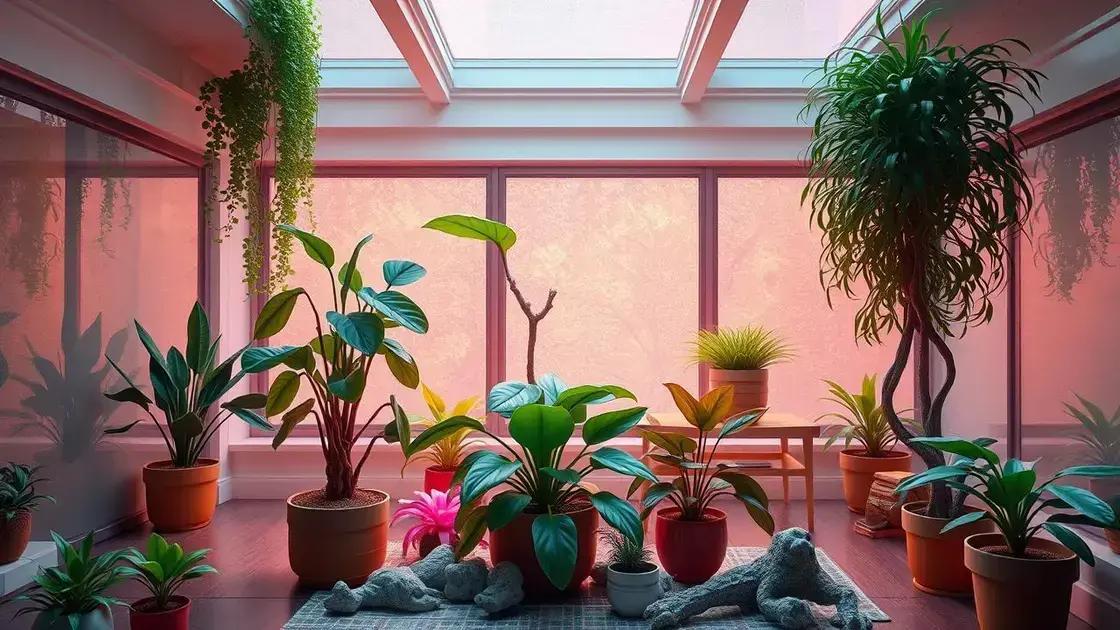How to Take Care of Money Plant Indoor: 5 Essential Tips for Success
How to take care of money plant indoor can be a mystery for many plant lovers. Implementing the right care strategies is key to fostering a vibrant, lush environment in your home. Uncover the secret to keeping your plant lush and thriving through practical maintenance and attention to detail.
Table of Contents
ToggleEssential watering techniques for your indoor money plant
Essential watering techniques for your indoor money plant are crucial for its overall health and vitality. To ensure your money plant thrives, you need to pay attention to watering frequency, the water quality, and the signs of over or under-watering.
Watering frequency
Understanding how often to water your money plant is vital. Generally, you should aim to water every 1-2 weeks, depending on the season and humidity levels in your home. Here are some practical tips:
- In summer, water more frequently as the soil dries out faster.
- In winter, reduce watering since the plant’s growth slows down.
- Check the top inch of soil; if it’s dry, it’s time to water.
Water quality
Using the right water can significantly impact your plant’s growth. Here are a few things to consider regarding water quality:
- Tap water is often too harsh, so let it sit for 24 hours to allow chemicals to dissipate.
- Consider using distilled or rainwater for optimal conditions.
- Ensure the water is at room temperature to avoid shocking the roots.
Signs of over or under-watering
Being aware of the signs can help you adjust your watering techniques promptly:
- Yellowing leaves often indicate over-watering.
- Brown, crispy leaves can suggest under-watering.
- Wilting may occur in both cases; check the soil moisture.
Implementing these essential watering techniques for your indoor money plant can lead to a lush, thriving plant. For more insights on indoor gardening care, check out exploring indoor gardening techniques.
Optimal sunlight exposure to enhance growth

Optimal sunlight exposure to enhance growth is essential for your indoor money plant’s health. Without the right light, your plant may struggle to grow and thrive.
Understanding sunlight needs
Money plants prefer bright, indirect sunlight. Direct sunlight can scorch their leaves. Here are some vital points to consider:
- Avoid placing your money plant in harsh, direct sunlight.
- Instead, position it near a window where it can receive filtered light.
- Rotate the plant occasionally for even light distribution.
Signs of inadequate sunlight
Recognizing signs that your plant isn’t getting enough light can help you adjust its location. Look for:
- Pale or yellowing leaves.
- Leggy growth, where the plant stretches towards the light source.
- Slow growth or stunted development.
Ideal locations for money plants
Depending on your environment, here are some recommended spots:
- Near east-facing windows for morning sun.
- In a well-lit room with indirect light available.
- On a shelf or table near a window, away from the sun’s harsh rays.
By ensuring optimal sunlight exposure to enhance growth, you can maintain a thriving money plant in your indoor space. For more resources on how to care for houseplants, check out exploring indoor gardening techniques.
Soil and fertilizer requirements for healthy money plants
Soil and fertilizer requirements for healthy money plants are essential to ensure that your plant thrives. The right soil mix and fertilizer regimen will facilitate nutrient uptake and promote lush growth.
Choosing the right soil mix
Your money plant thrives in a well-draining soil mix. Here are some effective components to consider:
- Potting soil that is rich in organic matter.
- Perlite or vermiculite to enhance drainage.
- A bit of sand to increase airflow and prevent compaction.
Fertilizer application frequency
Regular fertilization is important for maintaining healthy growth. Follow these guidelines:
- Apply a balanced liquid fertilizer every 4 to 6 weeks during the growing season (spring and summer).
- Reduce or suspend fertilization in the fall and winter when growth slows.
- Consider using organic fertilizers for a more natural approach.
Signs of nutrient deficiency
Recognizing nutrient deficiencies early can help you rectify issues quickly. Look for these symptoms:
- Yellowing leaves can indicate nitrogen deficiency.
- Small leaves or stunted growth may signal a lack of potassium.
- Brown leaf edges could suggest insufficient moisture or nutrient imbalance.
By addressing the soil and fertilizer requirements for healthy money plants, you set the stage for lush, green growth. For further insights on plant care, check out exploring indoor gardening techniques.
In conclusion
Caring for your indoor money plant involves understanding essential aspects like watering techniques, optimal sunlight exposure, and soil and fertilizer requirements. By implementing these practices, you can ensure that your money plant thrives and enhances your indoor space. Remember to pay attention to your plant’s specific needs and adjust your care routine accordingly. For more tips, explore tips on enhancing your indoor garden.

